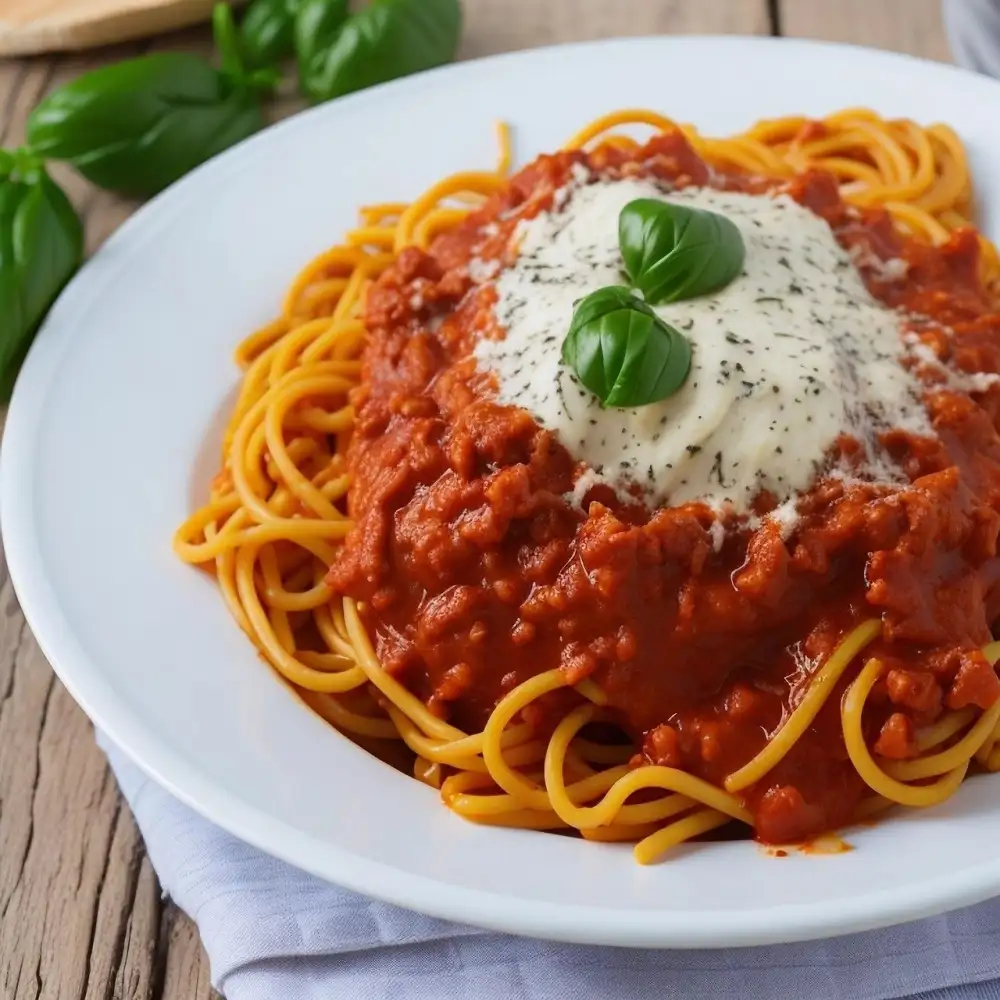Bolognese Sauce: A Flavorful Italian Classic Recipe to Elevate Your Pasta Dishes

Bolognese sauce, also known as ragù alla bolognese in Italian, is a rich and flavorful meat-based sauce that hails from the city of Bologna in northern Italy. This classic sauce is a staple in Italian cuisine and is traditionally served with tagliatelle pasta. Bolognese sauce is characterized by its slow-cooked preparation, which allows the flavors of the ingredients to meld together beautifully. It is a versatile sauce that can be used in various pasta dishes, making it a favorite among both home cooks and professional chefs alike.
History and Origin of Bolognese Sauce
Bolognese sauce, also known as ragù alla bolognese, originates from Bologna, Italy. This rich and savory meat-based sauce has a history dating back to the late 18th century. Traditional recipes call for a combination of finely chopped onions, celery, and carrots cooked with ground beef or veal, tomatoes, wine, and milk or cream. The slow cooking process allows the flavors to meld together beautifully, creating a hearty and comforting sauce that has become a staple in Italian cuisine. While variations exist worldwide, the authentic Bolognese sauce remains a beloved classic that continues to be cherished for its depth of flavor and versatility in culinary creations.
Key Ingredients for Authentic Bolognese Sauce
Authentic Bolognese sauce, also known as ragù alla bolognese, is a rich and flavorful Italian meat sauce that requires a few key ingredients to achieve its signature taste. The essential components include finely chopped onions, carrots, and celery – known as soffritto – which form the flavor base of the sauce. Quality minced meat such as beef or a combination of beef and pork is traditionally used to give the sauce its hearty texture and depth of flavor. Additionally, a good quality tomato paste, red wine, whole milk or cream, and a hint of nutmeg are crucial elements in creating an authentic Bolognese sauce that is both robust and velvety in texture.
Step-by-Step Instructions on How to Make Bolognese Sauce
1. Heat olive oil in a large skillet over medium heat.
2. Add finely chopped onions, carrots, and celery (known as soffritto) and cook until softened.
3. Incorporate minced garlic and cook for another minute.
4. Increase heat and add ground beef, breaking it up with a spoon until browned.
5. Pour in red wine and let it simmer until mostly evaporated.
6. Stir in tomato paste, crushed tomatoes, beef broth, and seasonings like salt, pepper, and herbs.
7. Reduce heat to low, cover the skillet partially, and let the sauce simmer for at least 1-2 hours to develop flavors.
8. Adjust seasoning if needed before serving over cooked pasta.
Enjoy the rich flavors of this traditional Italian sauce that will elevate your pasta dishes to new heights!
Tips and Tricks for Perfecting Your Bolognese Sauce
To perfect your Bolognese sauce, start by using a combination of ground meats like beef, pork, and veal for depth of flavor. Sautéing the vegetables slowly in olive oil until they are soft and caramelized will enhance the overall taste. Adding a splash of red wine while cooking down the tomatoes can add richness. Simmer the sauce on low heat for at least 2-3 hours to allow the flavors to meld together beautifully. Remember to season with salt and pepper towards the end to adjust the taste according to your preference.
Serving Suggestions and Pairings for Bolognese Sauce
Bolognese sauce is a versatile and flavorful addition to various pasta dishes. One classic pairing is serving it with tagliatelle, a wide ribbon pasta that allows the rich sauce to cling to each strand. Alternatively, you can enjoy Bolognese sauce with spaghetti or rigatoni for a different texture experience.
For a lighter option, consider pairing Bolognese sauce with zucchini noodles or spaghetti squash for a low-carb alternative. The sauce also complements gnocchi or polenta beautifully, adding depth and richness to these dishes.
To enhance the flavors of Bolognese sauce, consider topping your dish with freshly grated Parmesan cheese and a sprinkle of chopped parsley for freshness. A side salad with a simple vinaigrette can provide a refreshing contrast to the hearty nature of the sauce.
When it comes to wine pairings, opt for medium-bodied red wines such as Sangiovese or Chianti to complement the meaty richness of Bolognese sauce. For those who prefer white wine, a crisp Pinot Grigio can also work well by cutting through the richness of the dish.
Experimenting with different serving suggestions and pairings can elevate your Bolognese sauce experience and create memorable dining moments.
Variations and Adaptations of Bolognese Sauce
While the traditional Bolognese sauce recipe is cherished for its rich flavors, there are several variations and adaptations that cater to different tastes and dietary preferences. For a lighter option, some recipes substitute ground turkey or chicken for the beef, creating a healthier alternative without compromising on taste. Vegetarians can enjoy a meat-free version by using lentils or mushrooms as the base instead.
For those looking to add a twist to the classic recipe, incorporating red wine or a splash of cream can elevate the flavors and create a more luxurious texture. Additionally, experimenting with herbs like rosemary, thyme, or bay leaves can infuse unique aromas into the sauce. Some creative chefs even add ingredients like pancetta, olives, or anchovies to enhance the umami depth of the dish.
Ultimately, the beauty of Bolognese sauce lies in its versatility and adaptability. Whether you prefer a traditional approach or enjoy exploring new flavor profiles, there is ample room for creativity when it comes to this beloved Italian classic.
In conclusion, Bolognese sauce is a rich and flavorful Italian classic that has stood the test of time. Its origins date back to the city of Bologna in Northern Italy, where it was traditionally served with tagliatelle pasta. The key to a delicious Bolognese sauce lies in using quality ingredients such as ground beef, pancetta, onions, carrots, celery, tomatoes, and a splash of milk. By following the authentic recipe and cooking it low and slow to allow the flavors to meld together, you can create a truly comforting and satisfying dish. Whether served over spaghetti or layered in lasagna, Bolognese sauce is sure to elevate any pasta dish and delight your taste buds with its depth of flavor. So next time you're craving a hearty and delicious meal, consider making a batch of homemade Bolognese sauce – your family and friends will thank you for it!
Published: 05. 05. 2024
Category: Recipes



